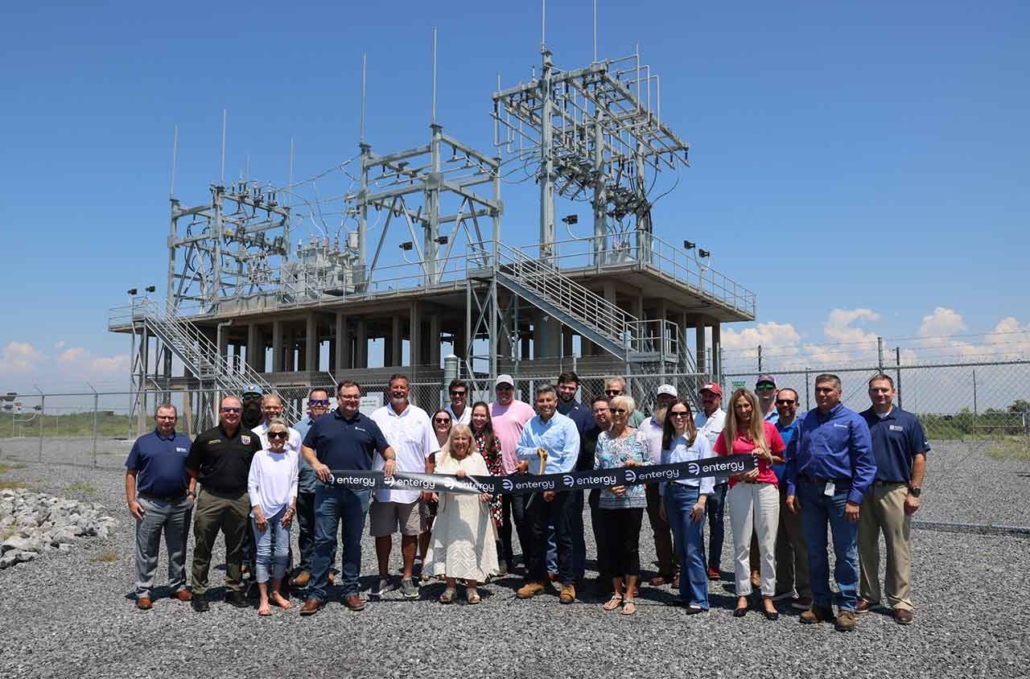Step 6: Protect the power grid from extreme weather
In recent years, Texas has seen an increase in severe weather events, making the need for a more resilient electrical grid critical. The National Centers for Environmental Information reports that Texas has experienced 179 extreme weather events between 1980 and June 2024, including hurricanes and winter storms. These events, along with a growing reliance on electricity for homes, businesses and essential services, highlight the importance of strengthening our energy infrastructure. Entergy Texas is responding to these challenges with its Texas Future Ready Resiliency Plan, a comprehensive initiative designed to protect the power grid in Southeast Texas and ensure reliable service for our customers.
In June 2024, Entergy Texas filed an application with the Public Utility Commission of Texas to approve Phase I of the Resiliency Plan. The Commission approved Phase I of the plan in January 2025, allowing Entergy Texas to move forward with $137 million in strategic projects to strengthen the Southeast Texas power grid, reduce storm-related outages, and save customers millions in restoration costs over the coming decades.
The first phase of the Texas Future Ready Resiliency Plan will focus on key infrastructure upgrades, including:
- Stronger distribution lines: Upgrading local distribution and main feeder lines to higher storm-resilient standards.
- Stronger transmission lines: Rebuilding high-voltage lines and poles to withstand hurricane-force winds.
- Undergrounding select lines: Moving overhead lines underground in targeted areas.
In addition, Entergy Texas plans to pursue funding from the Texas Energy Fund to implement additional projects at no cost to customers and explore innovative financing options like storm securitization to deliver long-term savings. The company’s approach to balancing affordability with strategic grid improvements proved successful when it recently secured $54 million in federal funding through the Department of Energy’s Grid Resilience and Innovation Partnerships program to bolster grid reliability in Port Arthur, a coastal community vulnerable to storms. A portion of these funds will offset the cost of Phase I projects as well.
For more than two decades, Entergy Texas has made strategic investments to enhance the resilience of our power grid. Between 2013 and 2023, we replaced 271 wood poles across 71 transmission lines in the Entergy Texas service area, improving the structural integrity of our network. Additionally, we undertook significant upgrades to enhance the reliability of transmission substations along the Bolivar Peninsula. One aspect of the $110 million Bolivar Peninsula Reliability Project has already proven to be a tremendous success: composite poles. An alternative to wooden poles, composite poles are highly resilient when faced with adverse conditions, including severe storms, ice and wildfires. When Hurricane Beryl impacted the Bolivar Peninsula in July 2024, 16 wooden poles were taken out of service. Despite approximately 90 mph winds in the area, several miles of composite poles stood tall, further proving the importance of grid-hardening investments.
As the need for resiliency grows, our comprehensive Resiliency Plan will ensure that the Southeast Texas power grid remains strong and prepared for the challenges ahead.
Entergy Texas leadership, employees, and community partners cut the ribbon at the new Port Bolivar substation, marking the completion of the Bolivar Peninsula Reliability Project

